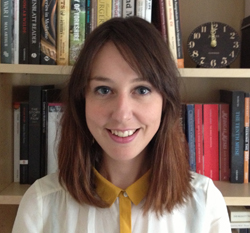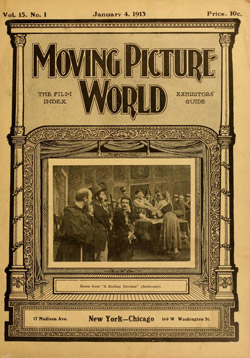York student takes up stateside fellowship at the Library of Congress
A University of York postgraduate student has received a three-month fellowship to carry out research into silent film at the Library of Congress, Washington DC.

Catherine Oakley has received a three-month fellowship to carry out research into silent film at the Library of Congress, Washington DC
Catherine Oakley, a second-year PhD student with the Department of English and Related Literature, was awarded the fellowship under the Arts & Humanities Research Council/Economic and Social Research Council (AHRC/ESRC) International Placement Scheme.
Based at the John W. Kluge centre in the library’s magnificently restored Thomas Jefferson Building, Catherine will work primarily in the Motion Picture, Broadcasting and Recorded Sound Division (MBRS), with the library’s unique Paper Print and George Kleine collections of early film.
Located on Capitol Hill, the Library of Congress is the USA’s oldest federal cultural institution and serves as the research arm of Congress. It is the largest library in the world, with over 151 million items on 838 miles of bookshelves and 10,000 new items added daily.
Catherine’s doctoral project, supervised by Professor Judith Buchanan, investigates the close relationship between medicine, literary fiction and early cinema from 1880 to 1925, tracing representations of the human body across both clinical and cultural contexts. Her interdisciplinary research aims to throw light on the extent to which art and science collaborated - and diverged – in shaping contemporary understandings of human physiology and subjective experience.

'Moving Picture World' is an important early film trade journal which the Library of Congress has in its collection
Catherine, who begins her fellowship on 7 October, said: “This fellowship is a fantastic opportunity to extend the breadth and depth of my thesis. From its emergence in 1895, cinema demonstrated a compulsive interest in bodily form and function. A number of early fiction films in the first quarter of the twentieth century visualised both ‘normal’ and ‘abnormal’ bodies in ways which were imaginative, fantastical, and often comedic or unorthodox.
“The Motion Picture Division at the Library of Congress holds a range of unique materials, including 16mm and 35mm reference prints of early animations and short films by some of the leading film companies of the era, as well as an extensive collection of contemporary trade journals and periodicals. I’m looking forward to exploring these with the library’s specialist curators, and meeting other scholars working in the growing fields of early cinema studies and the Medical Humanities.”
The International Placement Scheme supports postgraduate students and early career researchers on short-term fellowships of up to six months at overseas research institutions, giving them access to world-class research facilities, expertise and networking opportunities.
Further information
- More information on the University of York’s Department of English and Related Literature at www.york.ac.uk/english
- Further information on the AHRC/ESRC International Placement Scheme at www.ahrc.ac.uk/Funding-Opportunities/Pages/InternationalPlacementScheme.aspx
- More information on the Arts & Humanities Research Council at www.ahrc.ac.uk
- More information on the Economic and Social Research Council at www.esrc.ac.uk
